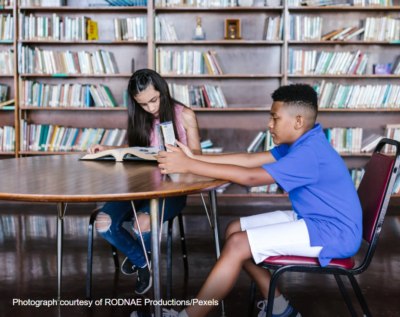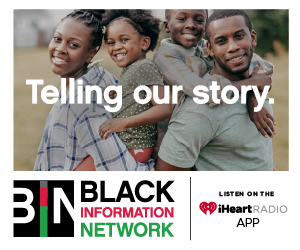on
Doomscrolling through bad news has become something of a national pastime — and it’s easy to tune it all out or wonder if things really are as bad as they seem.
But when it comes to student literacy, especially in the wake of last year’s dramatic National Assessment of Educational Progress results, it really is that bad.
“When wholesale numbers of young people are not proficient with reading, it’s always cause for alarm. It is never overstated,” says Dr. Tanji Reed Marshall, the director of P-12 practice at the Education Trust.
In fact, she says, we should be more concerned.
“If you’re not literate, then you are always at the mercy of those who are literate,” Marshall says.
When wholesale numbers of young people are not proficient with reading, it’s always cause for alarm.
DR. TANJI REED MARSHALL, DIRECTOR OF P-12 PRACTICE AT THE EDUCATION TRUST
One of the issues is that we are focusing on instructional curricular levels, instead of systemic issues and systemic areas of focus. Educators and decision-makers need to ask critical questions in order to improve: What are we aiming for when we say ‘literacy’? Who is it that we are concerned about?
“Black and Brown children have always been at the mercy of deficit thinking, which has been impacting the quality of materials they get, the quality of access they get, and the instruction they get,” Marshall says.
So when the NAEP results came out, and it revealed more than just “the people we expect” to not meet proficiency levels — like white students — then it became a national concern.
Reading scores declined to levels not seen since 2005. And scores dropped in 29 states and D.C., remaining stagnant in the other 20. No states saw an increase in reading scores. And, looking at demographic groups, AANHPI students’ scores remained stagnant, while there were drops for white, Black, Hispanic, and American Indian/Alaska Native students.
“We have to be honest and name what’s happening with the concern,” Marshall says. “If there was a real concern around literacy proficiency across the country, it wouldn’t take these results to elevate the concern to a national outcry for an attention on literacy.”
Addressing Literacy Equitably
Literacy isn’t addressed equitably because schools aren’t given resources equitably.
In order to teach more equitably, educators need to consider all dimensions of student learning, Marshall says. It comes down to looking at what’s happening in the interactions, power dynamics, and instructional decision-making that educators do when they make decisions, because those decisions are “qualitative in nature with quantitative outcomes.”
“We don’t necessarily always look at the intersection between that qualitative decision and its impact on the quantitative outcome,” Marshall says. “It’s really thinking about how do we really understand what are some of the challenges that might be outside of school.”
The study found that 30% of all respondents, which includes teachers, expressed explicit pro-white/anti-Black bias, and 77% expressed implicit pro-white/anti-Black bias.
These outside challenges could be anything from hunger to needing eyeglasses to living in a house facing economic distress.
The most recent Household Pulse Survey from February 2023 found that Black families with children were the most likely to report both “sometimes” (14%) and “often” (5%) not having enough to eat, both rates twice the amount as white families with children.
And then we have to address teacher bias because a Brookings report from 2020 found that teachers still harbor the same level of bias against students as the public.
The study found that 30% of all respondents, which includes teachers, expressed explicit pro-white/anti-Black bias, and 77% expressed implicit pro-white/anti-Black bias. These biases impact students immeasurably: Teachers have lower expectations, worse instructional quality, less concern for creating a mutually respective classroom environment, and higher levels of discipline.
“They equate that to cognition. The fact that I am experiencing economic distress is not a factor in my intellect. I am still able to learn,” Marshall says. “You might have to give me more resources because I don’t have access to them on my own at home. But that is not a de facto correlation to my cognitive ability.”
These biases need to be challenged with a different set of questions to figure out how to offer students better and more specific support.
“If I’m hungry, I don’t care what the words on the page say,” Marshall says.
Some of these things need to be taken off a teacher’s plate. Not only is it not what they were trained to do, but we need to move away from this “place where we are asking teachers to be the everything of the child,” Marshall says. They can be the conduit to other resources, but they shouldn’t be the sole provider of those supports.
“We have to be able to have the systems in place that are going to be able to address the needs of students that are impacting quantitative outcomes,” Marshall says.
Culturally Responsive Literacy
Following states like Florida passing legislation restricting the way race and racism are taught in schools, there’s been an increase in the national conversation about the need for culturally responsive teaching. But it can be difficult to understand what “culturally responsive” means in many situations — like when it comes to literacy, for example.
Marshall says it means systematically analyzing texts to have a better understanding of how people, cultures, and topics are presented within them. When it comes to people (the characters in the book), it matters how they are presented, whether they have agency, if they’re influential, and whether they have the opportunity to grow and change during the course of the text.
For culture, the representation matters, whether it’s devoid of stereotypes and how it interacts with other cultures. There shouldn’t be a white savior that comes in at the end and fixes everything.
If I’m hungry, I don’t care what the words on the page say.
DR. TANJI REED MARSHALL, DIRECTOR OF P-12 PRACTICE AT THE EDUCATION TRUST
And when considering the topics, educators should be on the lookout for sanitization and intellectual superiority. The topic — environment, pollution, enslavement — should allow the reader to have a deeper understanding of the issues. It’s best to avoid the trope of children’s books that say “as long as you, little child, are nice and kind, all of these bad things will go away,” Marshall says.
This will be the subject of an upcoming Education Trust report, expected later in the spring of 2023.
And, most importantly, cultural responsiveness is not just for Black and Brown students.
“If we take the position that cultural responsiveness for Black children, it means that there’s something you do for Black kids that you wouldn’t do for other children,” Marshall says. “That actually is getting us into trouble because it is creating a narrowing down of what learning is for Black children.”
Changes in the Classroom
So, what changes will we see in the way educators approach literacy this coming school year? It’s hard to say. While Marshall hasn’t heard about any overhauls to the curriculum, she says there’s a lot of movement toward returning to the “science of reading,” like phonics and the basics, especially in the lower grades.
“We’ve got to really have a deeper understanding about what it means to build literacy practices,” Marshall says. “That’s what’s necessary.”
But this is a problem that requires a lot of adaptive thinking, Marshall says. We need to look at the materials behind the process, what access individuals have, and make sure there are more highly qualified educators doing the teaching.
And a big push needs to be changing the way literacy is considered, which is relegated to just English or language arts. Because, Marshall points out, after a certain point, if you can’t read, you can no longer do advanced levels of math. At some point, illiteracy will become a barrier to advancing in other subject areas.
“Being literate, being able to read the world, read the texts, be a thoughtful, critical thinker is really important,” Marshall says. “Reading gets you there.”

Join our email list to stay connected.






